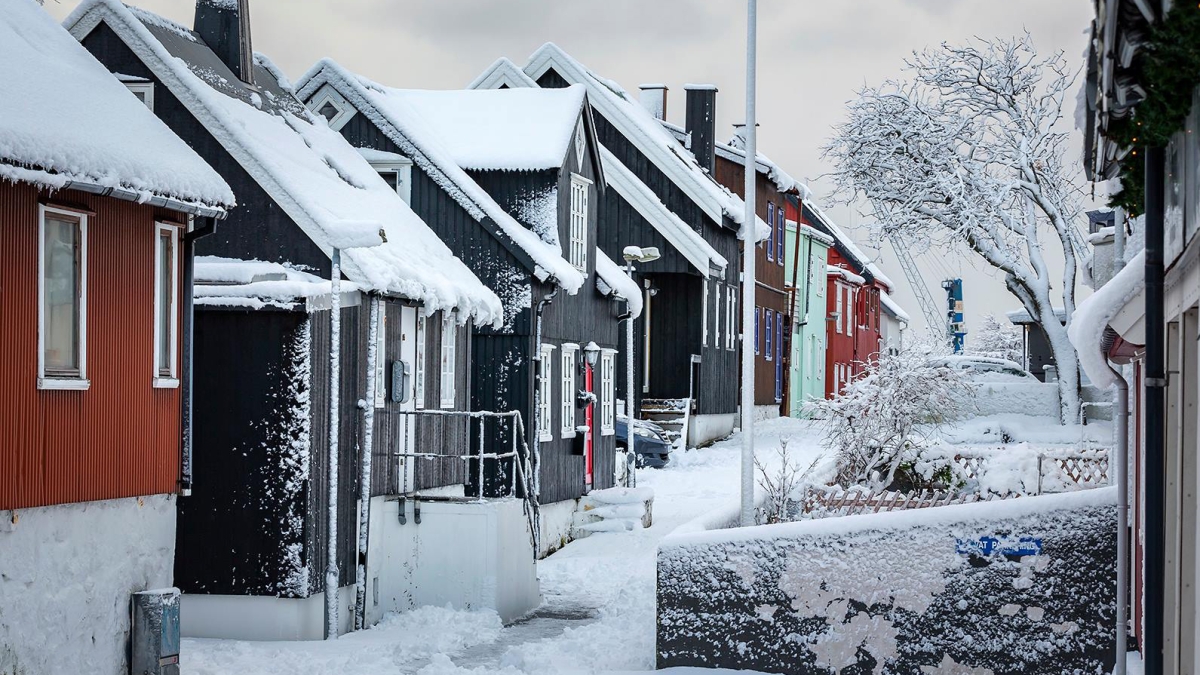Population
10. Jan 2023
Just over 54,200 people lived in the Faroes in December – a year-on-year increase of 1,2%

The population growth continues for the ninth consecutive year. This growth has, however, slowed down somewhat compared to previous years, dropping from 1.4% to 1.2% in the past year. The highest annual population growth was in 2018 when it exceeded 1.6%. The graph below shows the population trend for the past three years.
[px-graph-3]
The population trend is determined by four factors: immigration, emigration, births and deaths. The Faroese population increased by 620 people in the past year. This growth is made up of a net migration figure (the difference in the number of immigrants and emigrants) of 502 and an excess of live births over deaths of 118.
The excess of births has dropped significantly compared to the previous 12-month period due to fewer live births and more deaths. This decline is partially balanced out by a slightly higher net migration figure. Both immigration and emigration have increased in the past year, but since more people have moved to the Faroes than have moved away, the net migration figure has gone up.
Many emigrants – even more immigrants
The trend in the graph below shows that migration picked up pace at the end of 2020. Emigration increased relatively quickly up to the end of 2021 and has since stabilised at a monthly average of 115-120 people. Emigration figures are now at the highest level since 2014.
Immigration has been on a steady rise since 2020, with a monthly average of 160-165 immigrants in the past six months. This is the highest immigration figure since the turn of the century.
[px-graph-3]
Fewer births – fewer deaths
The trend in the graph below shows an unusually high number of deaths in the first half of 2022. However, this figure has come down again since August, as is reflected in the trend. The trend also shows a remarkably steady birth rate over the past year.
[px-graph-4]
Population by municipality and town/village
The table below shows the population across the 29 municipalities, with details for each town and village on 1 December 2021 and 1 December 2022.
Population growth was recorded in 18 out of the 29 municipalities in the past year. Tórshavn saw the highest population growth in numbers, while the highest relative growth was in Fugloy municipality. Ten municipalities had a population decline in the past year. Sumba saw the greatest population decline in numbers, while Skúgvoy had the greatest relative decline.
[px-graph-4]
Population figures have a one-month lag
The figures have a one-month lag due to delays in registrations, especially regarding address changes, where many registrations are made after the month of address change has ended. To accommodate as many corrections as possible, there is a one-month lag in the data.
About the population figures
The population is defined as all individuals registered in the national register as residents of the Faroe Islands. Population data includes date of birth, gender, place of birth, citizenship, relationship status, and, where applicable, information on immigration and emigration, domestically as well as between the Faroe Islands and other nations.
About the trend
The trend describes the population trend by adjusting for seasonal effects and other error components in the population figure.